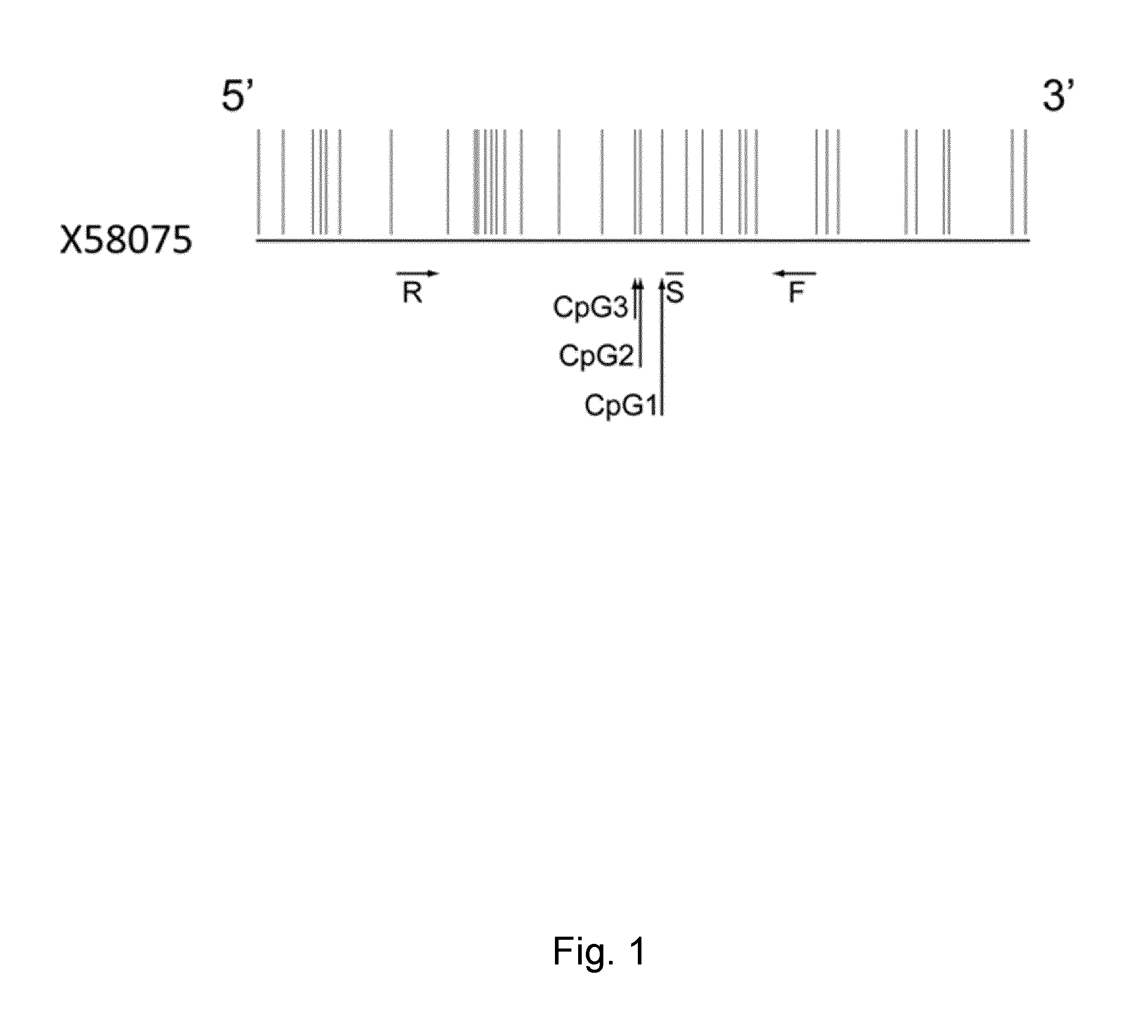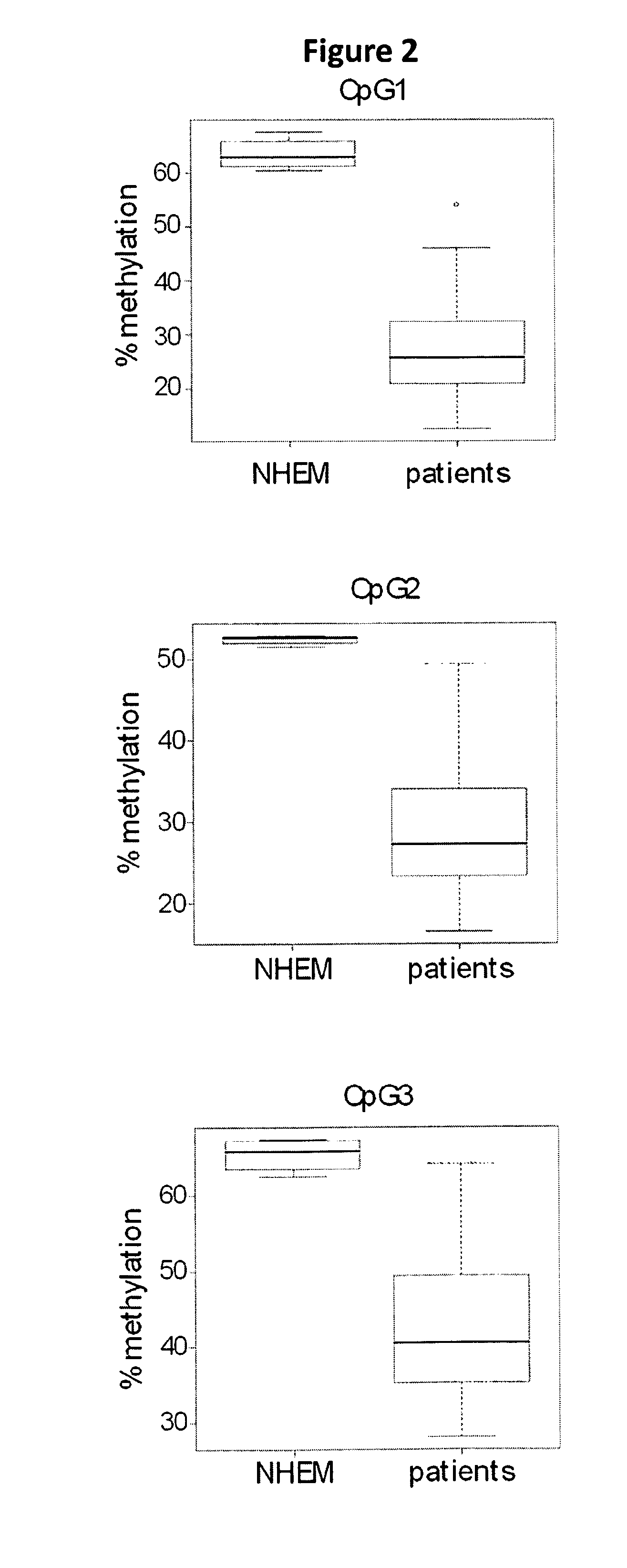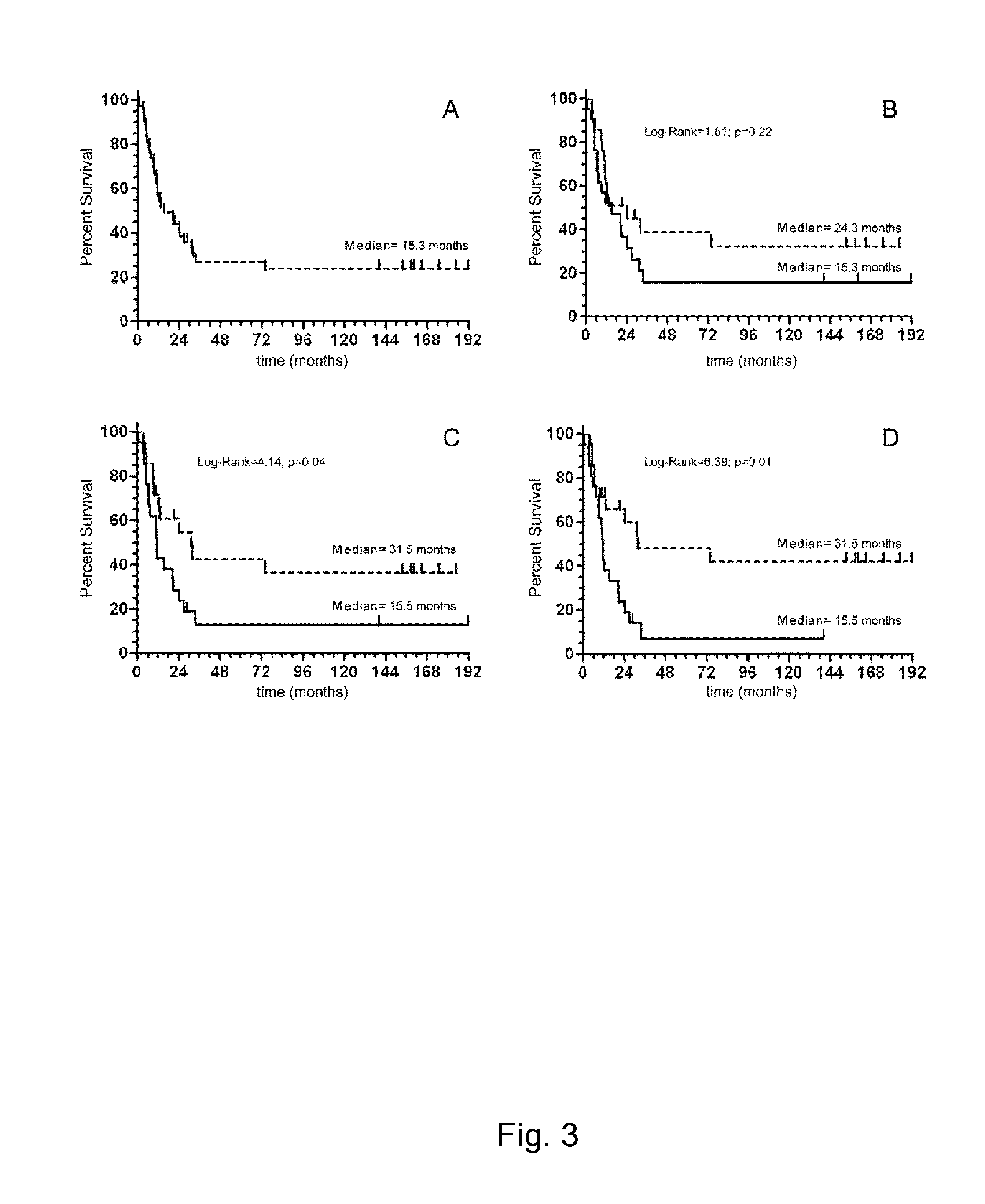Markers of melanoma and uses thereof
a technology of melanoma and methylation, applied in the field of methylation of genomic dna sequences, can solve the problems of no literature data on the prognostic role, no correlation between line-1 methylation level and survival, and affect the ability of physicians to identify cm patients, etc., to achieve the effect of reducing the extent of methylation of genomic dna, reducing the prognostic risk, and improving the survival ra
- Summary
- Abstract
- Description
- Claims
- Application Information
AI Technical Summary
Benefits of technology
Problems solved by technology
Method used
Image
Examples
example 1
Methylation Levels of the “Long Interspersed Nucleotide Element-1” Repetitive Sequences Predict Survival of Melanoma Patients
[0093]The prognosis of cutaneous melanoma (CM) differs for patients with identical clinico-pathological stage, and no molecular markers discriminating the prognosis of stage III individuals have been established. Genome-wide alterations in DNA methylation are a common event in cancer. This example defines the prognostic value of genomic DNA methylation levels in stage III CM patients.
[0094]Overall level of genomic DNA methylation was measured using bisulfite pyrosequencing at three CpG sites (CpG1, CpG2, CpG3) of the Long Interspersed Nucleotide Element-1 (LINE-1) sequences in short-term CM cultures from 42 stage IIIC patients. The impact of LINE-1 methylation on overall survival (OS) was assessed using Cox regression and Kaplan-Meier analysis.
[0095]Here the authors provide the first evidence that the methylation level of LINE-1 repetitive elements has a signi...
example 2
Methylation Levels of the “Long Interspersed Nucleotide Element-1” Repetitive Sequences Correlate with Presence and Levels of Expression of Cancer Testis Antigens in Cutaneous Melanoma
[0111]Cancer Testis Antigens (CTA) represent an important class of immunogenic tumor antigens that are currently utilized as targets in several cancer immunotherapy approaches. The expression of CTA has been shown to depend on the methylation status of their promoters. In view of the therapeutic relevance of CTA expression and of its regulation by promoter methylation, the authors asked the question whether LINE-1 methylation might correlate with CTA expression in CM cells, thus representing a surrogate marker for their presence and levels of expression. To this end, LINE-1 methylation was measured in CM cells by pyrosequencing assays and CTA expression was evaluated by qualitative or quantitative RT-PCR analyses. The correlation between LINE-1 methylation and CTA expression was evaluated through Spear...
example 3
Whole-Genome Methylation Profiles, and Derived Methylation Signatures, Predict Survival of Melanoma Patients
Introduction
[0117]Cutaneous melanoma (CM) is a very aggressive neoplasm of growing incidence and mortality rates in industrialized countries, and the leading cause of skin cancer-related deaths worldwide (MacKie et al., 2009). Surgery, in early phases of disease has curative potential for patients; for advanced CM conventional therapies have failed to prolong survival (Bhatia et al., 2009). At present, the best predictor of 5-year survival is the clinico-pathological stage of disease, which defines overall survival (OS) rates ranging from 95% to 7% for stage I to IV patients, respectively (Balch et al., 2001; Balch et al., 2009). However, within the same clinico-pathological stage category, patients often behave radically differently, and the current lack of prognostic molecular markers impairs our ability to identify CM patients with highly aggressive as opposed to more indol...
PUM
 Login to View More
Login to View More Abstract
Description
Claims
Application Information
 Login to View More
Login to View More - R&D
- Intellectual Property
- Life Sciences
- Materials
- Tech Scout
- Unparalleled Data Quality
- Higher Quality Content
- 60% Fewer Hallucinations
Browse by: Latest US Patents, China's latest patents, Technical Efficacy Thesaurus, Application Domain, Technology Topic, Popular Technical Reports.
© 2025 PatSnap. All rights reserved.Legal|Privacy policy|Modern Slavery Act Transparency Statement|Sitemap|About US| Contact US: help@patsnap.com



